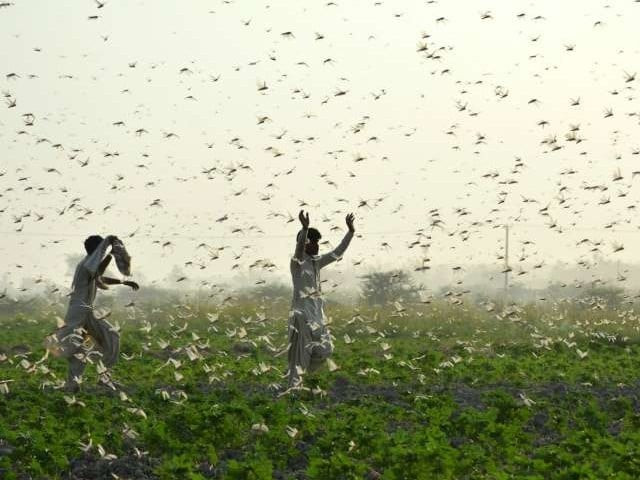Pakistan, China team up to fight locusts
Indicate establishment of centre to help control pests

“The worst that we have ever seen-ever. I cultivated around 20 hectares of cotton crops and almost all of them have been eaten. It is a loss of around Rs10 million. It will take years to recover from this loss,” said Mir Gul Muhammad, a farmer in Balochistan, adding that, “These nasty insects appeared like a dark cloud out of nowhere and ate 80% of my crop in a few days.”
In 2020-21, Pakistan experienced its worst locust outbreak in nearly three decades, causing severe crop yield reduction or even total failure in many areas. “According to the Food and Agriculture Organisation (FAO), desert locusts affected 38% of Pakistan’s land area. The swarms caused significant damage to food crops, including wheat, maize, and vegetables. Similarly, the Pakistan Agricultural Research Council data showed that the locusts damaged over three million hectares of crops, leading to losses of around $3 billion,” noted Professor Hidayat Ullah from the University of Swabi.
Luckily, with the joint efforts of experts from both China and Pakistan, the locust plague was finally brought under control. “The intensity has been reduced. Swarms have been restricted to the eastern boarder of Pakistan by effective aerial spray,” said the professor. With the support of the FAO, Chinese government and other international organisations, various measures have been implemented to mitigate the impact of the outbreak.
“Nevertheless, we cannot relax our vigilance for even a second,” said Researcher Tu Xiongbing from the Institute of Plant Protection, Chinese Academy of Agricultural Sciences (CAAS).
THE ARTICLE ORIGINALLY APPEARED ON THE CHINA ECONOMIC NET
Published in The Express Tribune, February 22nd, 2023.
Like Business on Facebook, follow @TribuneBiz on Twitter to stay informed and join in the conversation.



















COMMENTS
Comments are moderated and generally will be posted if they are on-topic and not abusive.
For more information, please see our Comments FAQ